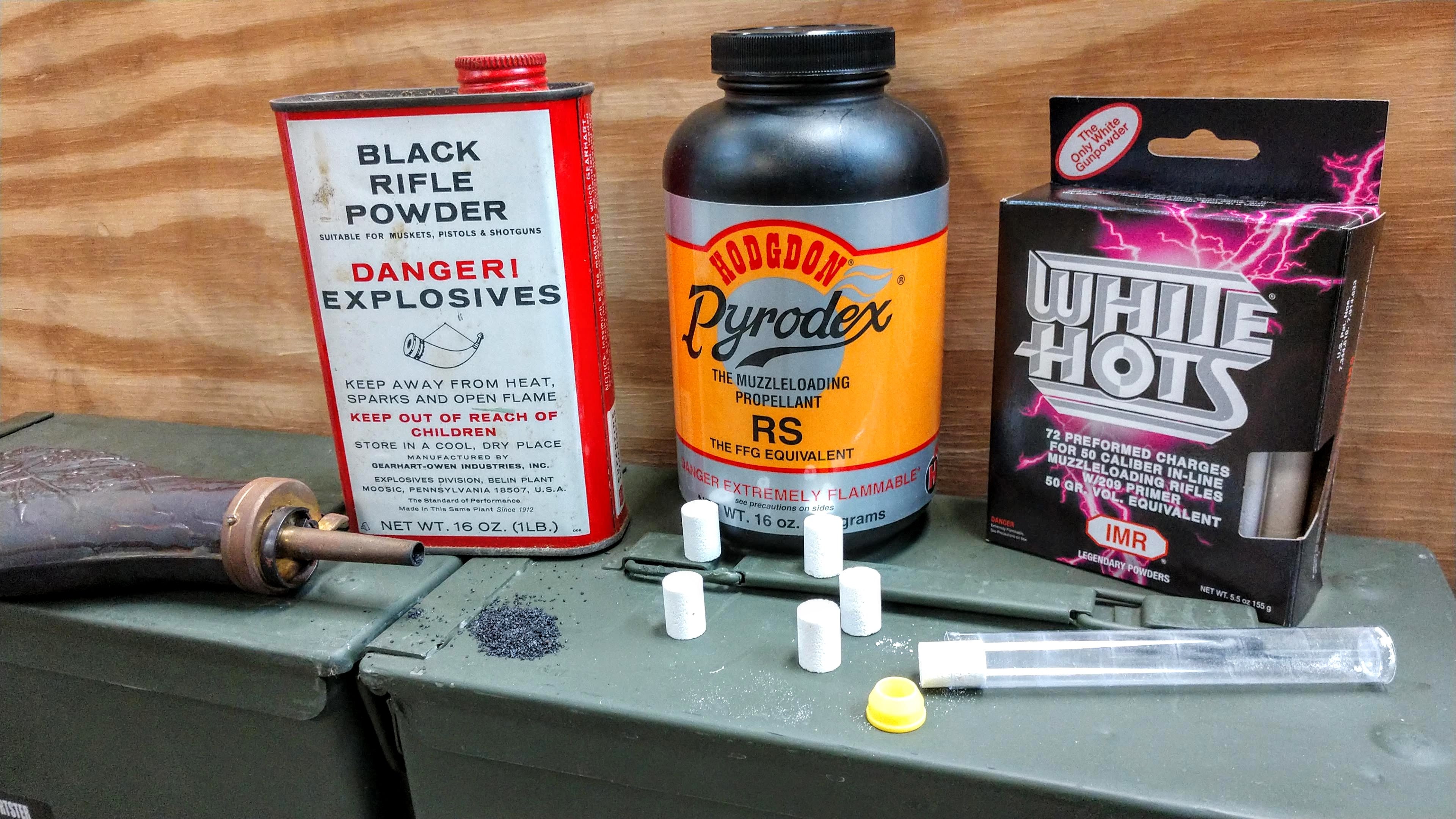The Evolution of Blackpowder for Muzzleloaders over the Years
Adam Scepaniak 11.21.19

It is that frigid time of year when many of us who have not filled our freezers with venison yet journey out into the woods in one last valiant effort to fill our tags and our bellies. Muzzleloading season across the US might not be the most popular, but it sure has come a long way in the not only the last 50 years, but even the last 5-10 years. Instead of requiring flint and real blackpowder to ignite our muzzleloaders, we can now use easy-to-dispense synthetic blackpowder pellets and a 209 primer. As quickly as our cellphones become outdated muzzleloading technology is improving at a startling rate to all of our benefit! Let’s take a look at the evolution of blackpowder.
Real Blackpowder
Real blackpowder is nearly non-existent in today’s market because of its volatility, it being so heavily regulated, and that fact that we have more modern alternatives. When most people think of blackpowder, even today, this is the type they envision in their minds. The kind that is highly explosive and is befitting of Wiley Coyote trying to blow up the Road Runner. In regards to muzzleloaders like us, it is indeed very potent if you happen to have an old bottle lying around. Less of it is required to launch a projectile and more care is required in storing it. Like all blackpowder types, it should be stored somewhere away from moisture to ensure it does not lose potency or spoil. Also, it is not something to meddle with in any ‘recreational’ sense whether you are blowing up tree stumps or otherwise. Real, true-blue blackpowder is indeed volatile and should be handled with care.
Modern Synthetic Blackpowder
Most all of the gunpowder you see in your local gun stores nowadays is synthetic blackpowder. What is meant by that terminology is it is a substitute to real blackpowder, and as a result, it is significantly less volatile. In fact, synthetic blackpowder is only combustible when it is ignited in a confined space (like a cartridge casing in modern ammunition or the chamber of your muzzleloader). If you were to pour out a small amount of synthetic blackpowder on concrete pavement and light it with a match, it would slowly and consistently burn off. There would be no cartoon explosion like some people might fear. That is why modern synthetic blackpowder is so commonplace while real blackpowder is as difficult to find as hen’s teeth. Synthetic blackpowder provides us with our same desired result, but is much safer to use.
Something else you might notice about modern blackpowder offerings are the variety and designations by the letter “F.” If a powder somewhere on its bottle is labeled as “FFG” or “FFFG,” what that code is telling you is how finely ground the powder is; thus, how it will burn and react when ignited. A powder with more F’s in its name is more finely ground (think powdered sugar). A synthetic blackpowder with less F’s in its name is more coarse in nature (think rock salt).
A synthetic gun powder that is more fine like FFFG will have a more smooth and consistent burn upon ignition. Sometimes this is desired while other times it is not. Conversely, a gunpowder like FG will be very coarse and have a more erratic and volatile ignition. Sometimes people may want this type of reaction with their gunpowder.
A typical gunpowder you would use for muzzleloading is somewhere in the middle with an FFG or FFFG designation. This will ensure a relatively smooth and reliable ignition for a wide variety of muzzleloader manufacturers and models. The primer you use to ignite your synthetic blackpowder plays a pivotal role in all of this, but that is another rabbit hole for another day.
Pre-Formed Synthetic Blackpowder Pellets
The most popular form of synthetic blackpowder or modern gunpowder is by far pre-formed pellets. These are chunks of synthetic gunpowder in pre-determined sizes that are readily available to be dropped inside of a muzzleloading rifle or pistol. Instead of relying on a handheld powder measure or a scale to weigh out your powder charges, you simply drop in a couple pellets and away you go!
Maybe it is the laziness in all of us, or it is just the advancement in technology and the sign of the times, but pellets like many things make muzzleloading and life easier for shooters. They are still available in multiple levels of density or coarseness with their “F” designations. You can also purchase them in different shapes as well. Some come in a star pattern to create more surface area (more area for a primer’s flame to ignite them) while other pellets are a simple cylindrical shape.
Every muzzleloader hunter will have their own reasoning for the different type of gunpowder they use, why it is superior to others, and why you should definitely use what they use. Our recommendation is to employ whatever gunpowder you feel the safest or most familiar with while shooting. There is no perfect answer and the sport of muzzleloading is generally very safe. It is always best to begin with safe practices and as you learn more try new things as you go along. For all of our muzzleloading mavens in the reading audience, what is your favorite – real blackpowder, modern synthetic substitute, or pre-formed pellets? Let us know all of your thoughts in the Comments below! We always appreciate your feedback.


